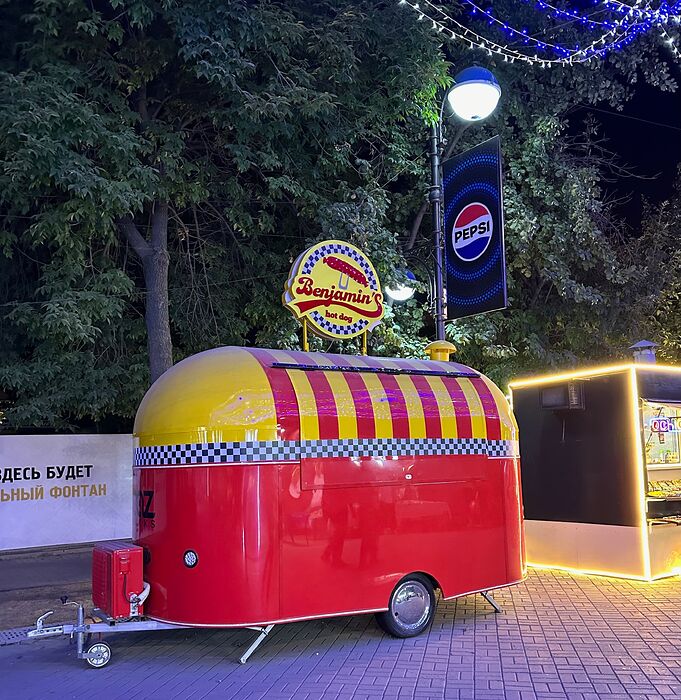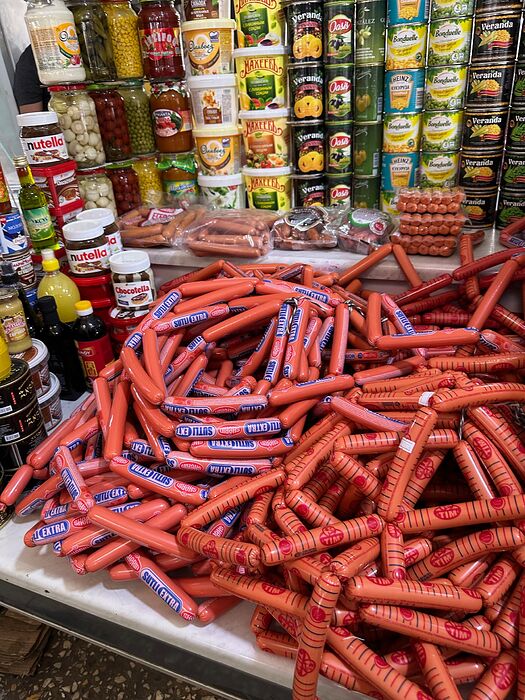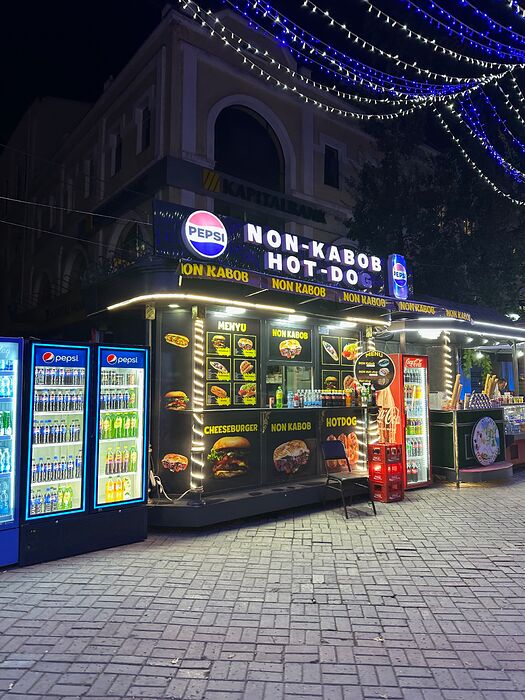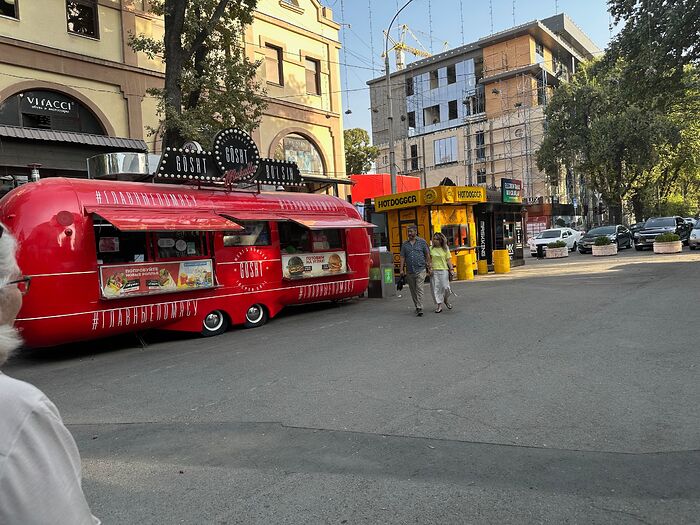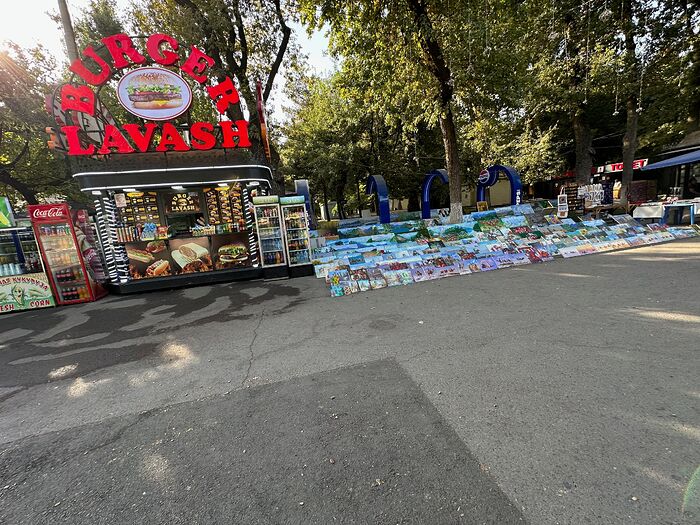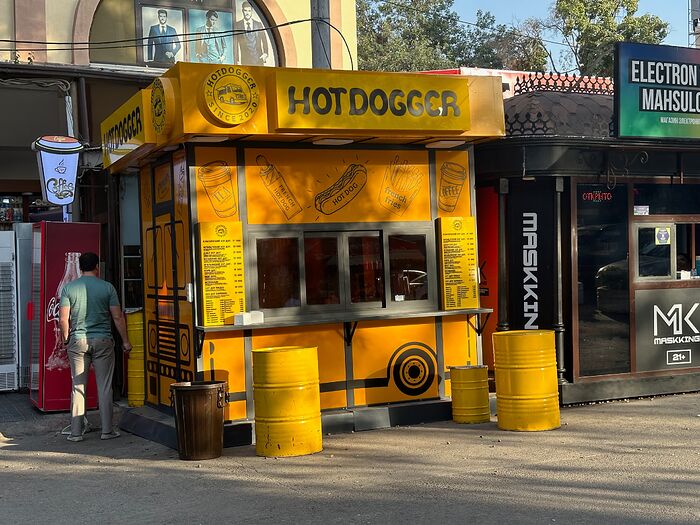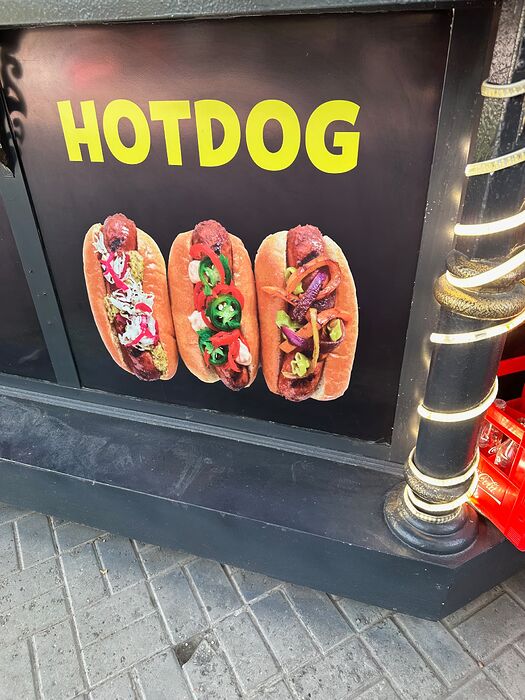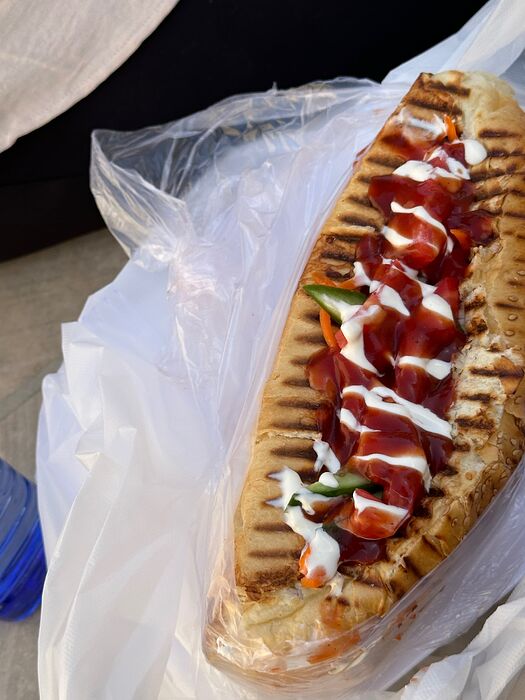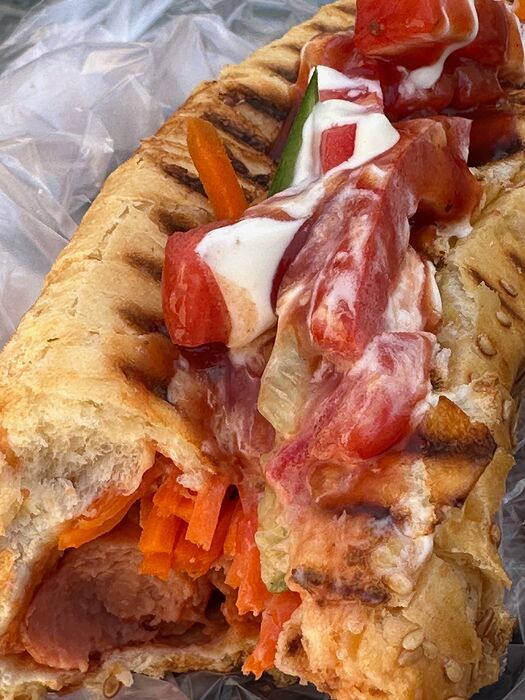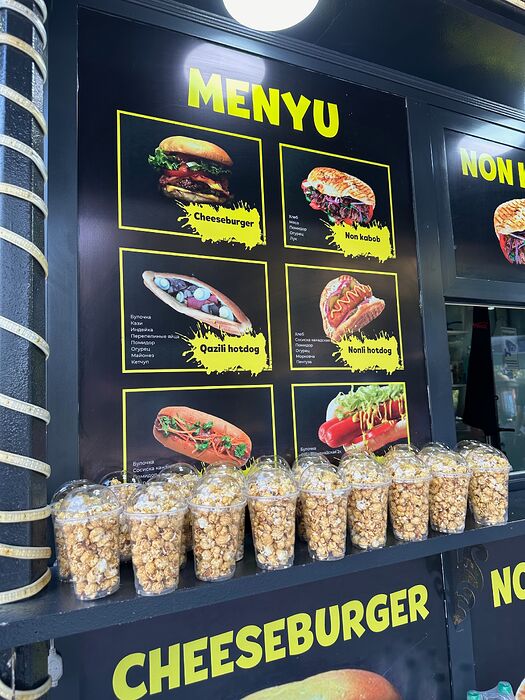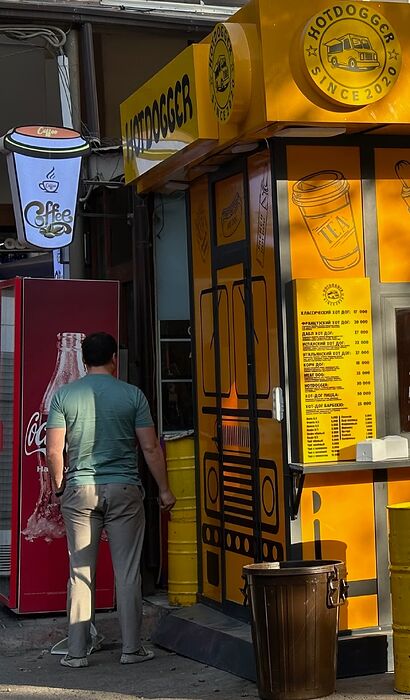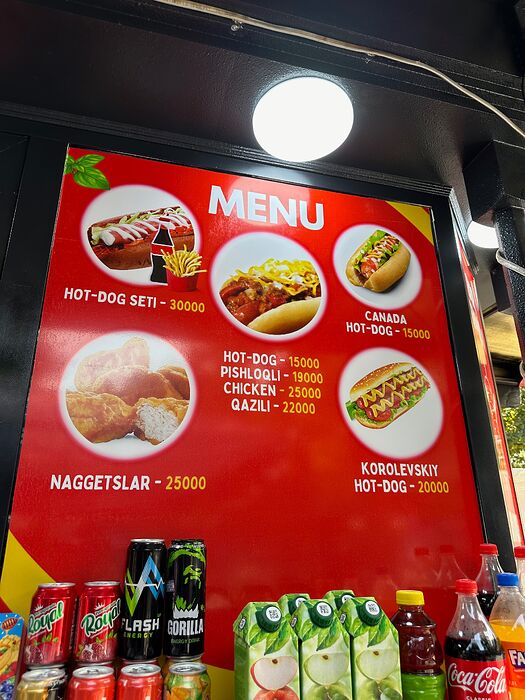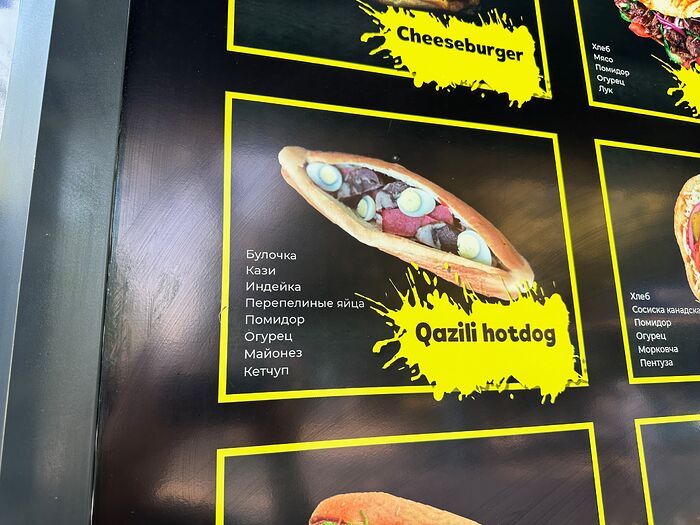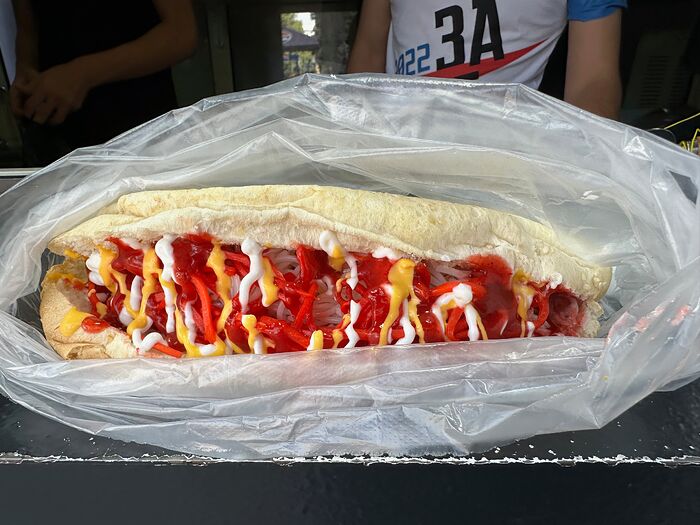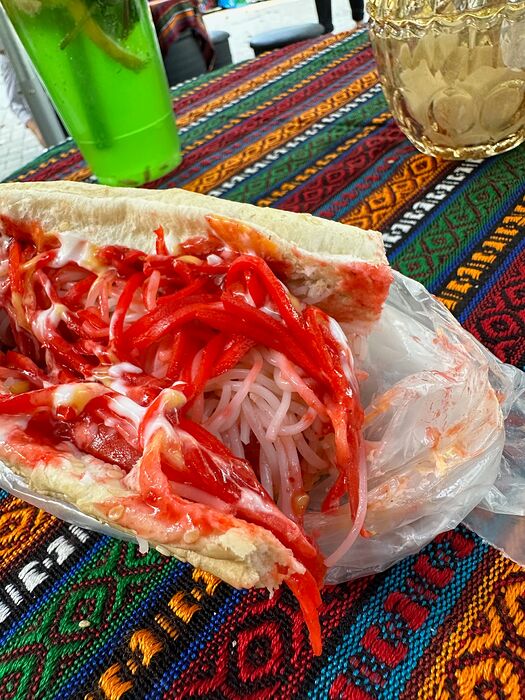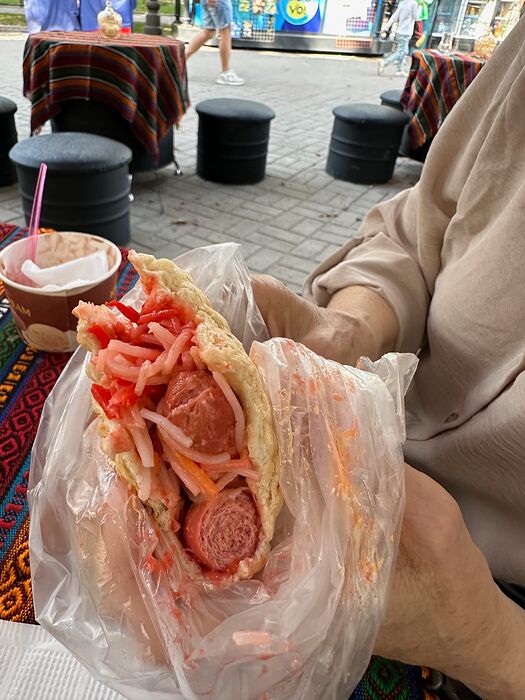HOT DOGS IN UZBEKISTAN
I meant to post about Uzbek hot dogs when we were in Uzbekistan 9 months ago, but it turned out that there was a lot of research needed and, even more time-consuming, a lot of attempts at translating Cyrillic characters, from the local Uzbek version of Russian. So, here goes, better late than never.
I was not expecting hot dogs to be a thing in Uzbekistan; I’m not naive, I know that hot dogs are very popular in many far-flung places (like Brazil, whose mega-loaded dogs are world famous). But it just never occurred to me that Uzbekistan might be crazy for hot dogs.
But they are everywhere. The markets have huge piles of hot dogs. And there are hot dog stands everywhere, with menus that often also feature burgers and kabobs on naan. I actually only ended up eating a hot dog twice, once from a takeout stand in Bukhara and once on Broadway, an outdoor carnival-like street entertainment area in Tashkent.
But I was never sure what I would get if I ordered a hot dog. At the takeout stand in Bukhara (where we had a conversation while standing in line with an 8th grade girl who spok – amazingly – five languages - English, German, Russian, Uzbek, and Tajik), there were several varieties of hot dogs shown on the menu. I excitedly googled the particular one I had ordered (shown below, sorry for the partially eaten shot) only to find that I had ordered a “hot dog with two weenies,” which wasn’t a lot of help in figuring out the ingredients.
Despite not knowing what was on it, the hot dog was delicious, one of the best hot dogs I’ve ever had. The highlight was this huge dollop of fermented carrots. From subsequent research, it turns out that these carrots are the distinctive ingredient of Uzbek hot dogs.
The carrots are known as morchovka. Morchovka, which is julienned carrots mixed with ingredients like red pepper, coriander, garlic, vinegar, and oil, and then fermented. The historical antecedents of morchovka are ugly. In 1937, Stalin forcibly relocated about 200,000 Soviet citizens of Korean origin to Uzbekistan (and, I think, to other locations in central Asia). These Korean emigres adapted kimchi to local ingredients and came up with morchovka, which became a near-ubiquitous hot dog topping in Uzbekistan.
Along with liberal amounts of tomatoes, ketchup, and mayo, plus a large Uzbek roll (much larger than a US hot dog roll), the morchovka makes a fantastic hot dog, especially if you love wet, sloppy hot dogs.
Back in Tashkent, at the Broadway Avenue street fair, the hot dog menus were even more varied and more challenging.
I don’t think I’ve succeeded in understanding Uzbek hot dogs very well. From research it appears that the sausage (“qazi”) on most Uzbek hot dogs is made with horsemeat, although the sausages I had were much juicier and tastier than the dry-ish strips of horsemeat that top most heaping servings of plov, the national dish. Despite my googling and Chat-GPT’ing, I am not 100% convinced that the two juicy hot dogs I had in Uzbekistan were made with horsemeat.
The non-horsemeat hot dog sausages appear (and I stress “appear,” because I am far from understanding this area of Uzbek cuisine) to be called Canadian hot dogs, which appear on a lot of menus. Some sources suggest that this sausage is actually imported from Canada, though that seems improbably expensive to me.
The most intriguing variation, which we saw on multiple menus, was the Qazili hot dog, which is a hot dog with quail eggs. Sadly, I did not order this.
At one hot dog stand, they actually listed some of the ingredients, but it was tough going translating this. Other than quail eggs, many of the ingredients looked pretty straightforward – cucumber, tomato, ketchup, etc., but the Canadian dog listed “turkey” as an ingredient and I have been completely unable to translate the word Пентуэа.
So I did what I often did on our trip to Uzbekistan, just looked at the menu photos and pointed to the one that looked interesting. At this Broadway hot dog stand, this led me to order the “nonli hot dog,” if my memory is correct.
This was a fascinating hot dog, even sloppier and tangier than the one in Bukhara. But what stumped me was that it had cold rice noodles on it, which I had no clue about. It was extremely good, but there might be a little bit of a learning curve with the cold noodles part.
Anyway, no one at either of the hot places I went to in Uzbekistan spoke English, so I was unable to ask any clarifying questions. However, I see that an Uzbek hot dog place has opened in the Midwood neighborhood of Brooklyn (LavashUzN1). We’re on vacation in Brooklyn this month, so maybe we’ll check this out (and hope for English good enough that I can get a more accurate education about Uzbek hot dogs).
